The M8050A BERT from Keysight Technologies let’s you test electrical interfaces and digital data streams for emerging data rates of 800 Gb/sec and 1.6 Tb/sec.
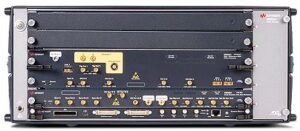 The world’s insatiable appetite for more and faster data keeps pushing wireline data rates to ever higher speeds. Much of the need for more and faster data comes from 5G mobile devices. Now that 400 Gb/sec optical links are in deployment, design engineers are moving to 800 Gb/sec links with research looking into 1.6 Tb/sec data rates. To evaluate chip and soon equipment designs, engineers need test equipment. That’s why Keysight Technologies has introduced the M8050A bit-error-ratio tester (BERT).
The world’s insatiable appetite for more and faster data keeps pushing wireline data rates to ever higher speeds. Much of the need for more and faster data comes from 5G mobile devices. Now that 400 Gb/sec optical links are in deployment, design engineers are moving to 800 Gb/sec links with research looking into 1.6 Tb/sec data rates. To evaluate chip and soon equipment designs, engineers need test equipment. That’s why Keysight Technologies has introduced the M8050A bit-error-ratio tester (BERT).
1.6 Tb/sec optical links will need eight multiplexed lanes pushing 200 Gb/sec of payload, each running over a separate electrical interface to processors or FPGAs. The actual data rate with framing overhead is about 224 Gb/sec. Because data is clocked on both rising and falling signal edges, the baud rate needed is 120 Gbaud. Today’s 800 Gb/sec links use eight 100 Gb/sec (112 Gbit/s) lanes.
The M8050A produces digital data streams for electrical interfaces to optical modules based on IEEE 802.3ck. The BERT lets you adjust the clock/data rate, bit pattern, and amount of injected interference for receiver tests. One of the interference parameters is bit jitter. Operated from a host computer or an embedded computer module, the modular M8050A consists of a chassis populated with the following modules:
- Pattern generator module (one or two channels), 32/64/120 GBaud,
- 60 GHz clock-generator module with jitter modulation,
- Interference source module.
See the M8050A configuration guide for chassis bundles and software.
While the M8050A provides stimulus signals, you’ll need other equipment to measure BER and view eye diagrams. In the photo from a demonstration at DesignCon 2022, the test setup consists of an M8050A (shown, lower right) with its output connected to both sampling and real-time oscilloscopes, both of which let you see the resultant eye diagrams and BER measurements. See the complete demonstration video from DesignCon 2022 starting at 5:06.
The M8050A supports four signal modulations: non-return to zero (NRZ), four-level pulse-amplitude modulation (PAM4), and the emerging PAM6 and PAM8 modulations (NRZ and PAM4 shown).
Keysight’s M8070ADVB software controls the BERT, performing automated jitter tolerance tests, parameter sweeps, and eye diagram measurements. It breaks down litter into its components, letting you focus on which type of jitter contributes to overall jitter.

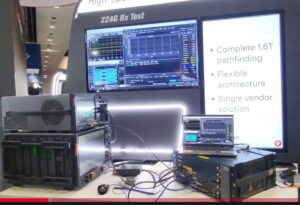

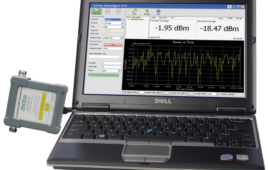
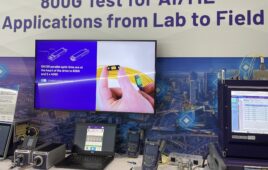
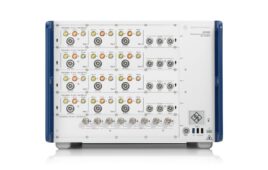
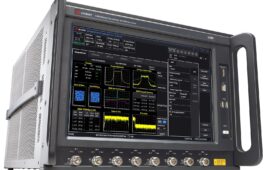
Tell Us What You Think!